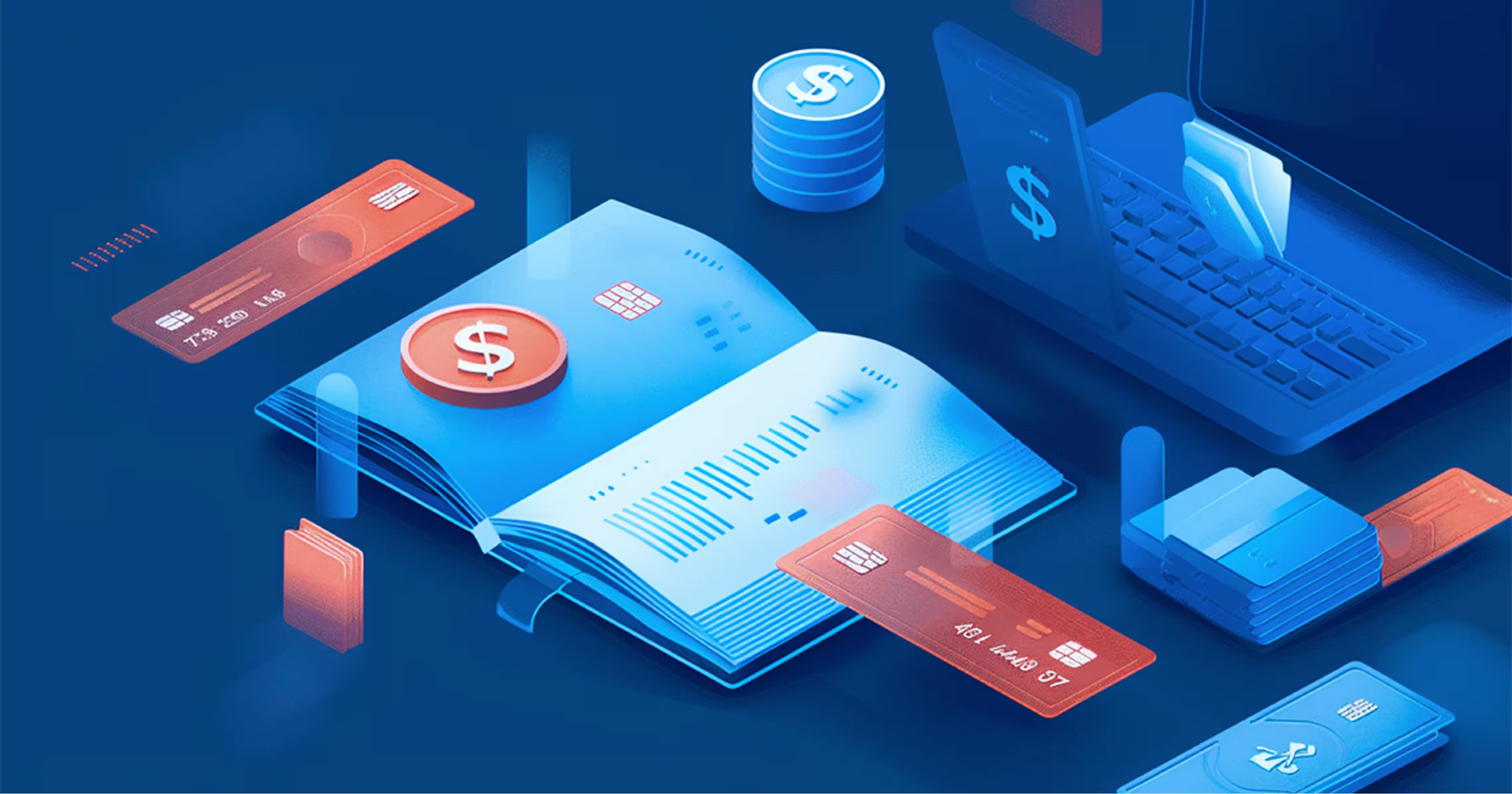PCI Compliance for SaaS Companies: A Practical Guide

Many finance leaders believe that outsourcing payments to a gateway solves PCI obligations. In reality, PCI compliance for SaaS touches far more than payment processing. It influences how data flows across your platform, how vendors interact with your systems, how your engineering team manages changes, and how ready you are for enterprise security reviews.
The cost of getting this wrong is high. Fines, legal exposure, forced re-audits, and reputational damage can slow growth significantly. The upside is just as strong. Companies that embrace PCI compliance early accelerate enterprise sales, reduce security review headaches, and build a strong foundation for scale.
This guide breaks PCI compliance into simple, business-focused concepts that help SaaS companies accelerate enterprise sales, reduce audit friction, and strengthen customer trust. It is designed so finance teams can lead the conversation with clarity and confidence, not react to it.
PCI compliance for SaaS: Breaking down what really matters
What PCI DSS actually is
PCI DSS is the global standard for securing cardholder data. Any SaaS platform that stores, processes, or transmits card information must comply. Even if you do not directly handle card numbers, PCI requirements may still apply because of how data passes through vendors, integrations, embedded payment forms, and contractual obligations.
Why PCI applies to SaaS, even when payments are outsourced
There are three reasons PCI still applies to SaaS companies:
- Card data may touch your system through forms, logs, or integrations.
- Your customers expect PCI attestation in their vendor due diligence.
- Contracts often require PCI compliance even when data is tokenized.
For many SaaS businesses, PCI compliance becomes a commercial requirement rather than a technical one.
PCI levels and what they mean for SaaS revenue
Higher PCI levels require more controls, more evidence, and tighter audits. Many SaaS companies unknowingly move from Level 3 to Level 2 or Level 1 as their customer base or transaction volume grows. This can influence audit timelines and team workload.
What PCI DSS 4.0 changes for SaaS companies
PCI DSS 4.0 introduces dozens of new or clarified requirements across risk analysis, authentication, logging, and change management. The key updates affecting SaaS include:
- Clearer shared responsibility between the cloud provider and the SaaS company
- Higher scrutiny for multi-tenant environments
- Multi-factor authentication for all access to cardholder data environments
- Continuous risk monitoring instead of annual checklists
- More formalized secure development practices across engineering
- Enhanced controls for payment page scripts to stop e-skimming
- Stricter logging and audit trail expectations
PCI DSS 4.0 essentially shifts PCI from a yearly event to an always-on standard.
Understanding PCI scope for SaaS
The most important PCI question is simple: Where does cardholder data go inside your product?
For SaaS platforms, the scope may include:
- Embedded payment components
- Client-side scripts (front-end)
- Mobile SDKs
- Serverless functions
- Error logs and analytics tools
- Billing workflows
- Integrations, plugins, or APIs
- Third-party services that pull data from your platform
CFOs often learn during audits that their biggest compliance risks come from unexpected data flows. For example, a marketing analytics tool that accidentally collects card data through a front-end script can put your entire environment in scope.
For finance teams, this matters because hidden data flows usually translate into delayed closes, unexpected audit findings, and unplanned remediation costs. PCI misalignment can quickly turn into financial exposure, operational risk, and even revenue leakage.
Unique challenges of PCI compliance for SaaS providers
SaaS companies face several issues that product or e-commerce businesses do not. These challenges matter because they influence compliance costs, audit readiness, and security posture.
1. Multi-tenant architecture increases scope
If even one customer interacts with card data inside a shared environment, the entire platform may enter PCI scope. This increases the compliance burden significantly.
2. Heavy reliance on integrations creates hidden risks
SaaS businesses connect with CRMs, data tools, ticketing systems, analytics providers, and more. Each integration must be reviewed for how it handles data. Even a harmless-looking plugin can expand PCI scope.
3. APIs introduce uncertainty
APIs are central to SaaS products, but they also create potential pathways for card data flow. If your API accepts or forwards sensitive data, even accidentally, it becomes part of the PCI scope.
4. Continuous monitoring expectations
PCI DSS 4.0 expects companies to monitor configuration changes, suspicious activity, and control drift in real time. For SaaS teams that ship frequently, this creates pressure to balance speed with governance.
5. Engineering effort underestimated by finance teams
Finance leaders often assume PCI is mostly policy work. In reality, PCI involves engineering work across encryption, logging, SDLC, authentication, and environment separation.
This has a direct financial impact. When engineering teams scramble during audits, it slows product delivery, increases compliance costs, and affects quarter-end predictability. CFOs often discover these costs only when audits escalate or when deal cycles stall due to unanswered security questionnaires.
PCI compliance solutions for SaaS companies
SaaS teams usually choose between manual PCI management and automated PCI platforms. The difference becomes clear as the company scales.
How Zenskar helps SaaS finance teams
Zenskar is designed for SaaS billing and financial operations, giving finance teams the accuracy and predictability they need to manage recurring revenue at scale. It helps reduce revenue leakage, shorten deal cycles, and streamline month-end processes without heavy engineering involvement.
- Multi-entity structure with consistent controls and documentation across regions
- Usage-based billing and subscription billing automated to reduce billing errors and disputes
- Complex revenue models configured without massive engineering effort
- Predictable audit cycles, supported by centralized billing records and clean evidence trails
- Faster month-end and quarter-end closes, with fewer exceptions and manual reconciliations
For finance leaders, this means predictable audit cycles and fewer surprises. Zenskar also supports ASC 606 and IFRS 15 compliant revenue workflows by automating revenue schedules, allocations, and audit trails across subscription and usage-based models. These standards often intersect with PCI-related financial reviews, so having accurate, rule-based revenue reporting reduces audit effort and gives finance leaders greater control during compliance assessments.
How to achieve PCI compliance: Practical steps for SaaS companies
Here’s a deep dive to translate PCI requirements for SaaS companies into simple business steps that CFOs and finance teams can lead.
1. Map your scope clearly
Work with engineering to identify every place where card data enters, moves, or gets logged. Use automated tools to detect unexpected card data patterns in logs and APIs.
2. Strengthen your security controls
Key PCI controls that matter most for finance and risk teams include:
- Encryption
- Role-based access control
- MFA for admin users
- Segmentation of sensitive environments
- Secrets and key management
- Logging and monitoring
- Tokenization to reduce scope
These controls impact audit requirements and insurance coverage.
3. Monitor systems continuously
PCI DSS 4.0 requires evidence that controls are working all the time, not just during the audit window. This is where automation helps. Monitoring tools detect drift before auditors do.
4. Complete the right Self-Assessment Questionnaire (SAQ)
Most SaaS companies use SAQ D. Make sure you:
- Collect evidence continuously
- Review access and logs regularly
- Validate your third-party vendors
- Ensure your cloud provider meets its PCI responsibilities
5. Involve a Qualified Security Assessor (QSA) early
If applicable, a QSA can help you avoid rework and reduce delays in the audit timeline. Many companies bring a QSA in too late and end up scrambling.
6. Communicate compliance to customers
Clear communication speeds up deal cycles. You should share:
- PCI level
- Controls applied
- Shared responsibility model
- Renewal timelines
Many enterprise customers ask for PCI before signing a contract.
PCI compliance mistakes and how to avoid them
- Missing hidden data flows: Logs, monitoring tools, and marketing scripts can unexpectedly capture and store card data.
How to avoid: Conduct regular data flow reviews and use automated discovery tools to detect unexpected PCI scope.
- Assuming cloud providers handle everything: Cloud vendors secure their infrastructure, but not your application, integrations, or internal processes.
How to avoid: Document your shared responsibility model clearly and validate every vendor’s PCI attestation.
- Thinking of PCI as a one-time project: Compliance drift happens quickly when systems change often.
How to avoid: Adopt continuous monitoring and maintain recurring checks across billing, engineering, and security.
- Trying to do everything manually: DIY compliance leads to missed evidence, re-audits, and slower deal cycles.
How to avoid: Automate evidence collection, maintain structured documentation, and centralize logs for easy retrieval.
- Insufficient documentation and audit trails: Inconsistent billing data and scattered evidence create delays during assessments.
How to avoid: Use automated platforms like Zenskar to support accurate billing and audit trails.
How Zenskar makes PCI compliance effortless and scalable
Zenskar helps SaaS companies strengthen the financial workflows that support PCI-aligned operations. Instead of scattered billing data, inconsistent subscription logic, or manual reconciliation, Zenskar creates a clean, centralized foundation for secure and predictable revenue management.
Secure payment flows through PCI-compliant gateways
Zenskar integrates directly with PCI-compliant payment processors such as Razorpay. All sensitive card data stays within certified environments while Zenskar handles the billing, invoicing, and usage records around those transactions. This reduces risk and simplifies downstream compliance reviews.
Automated billing to prevent revenue leakage
Complex billing creates unnecessary audit friction. Zenskar automates subscription changes, usage-based calculations, hybrid pricing, prorations, and contract-level rules. Every charge and adjustment follows a consistent workflow, which lowers exceptions and strengthens financial accuracy during audits. Consistent billing accuracy also supports ASC 606 and IFRS 15 recognition rules, which are often evaluated alongside PCI evidence during financial audits.
Centralized evidence for faster audit preparation
Audit cycles often slow down because data lives in too many systems. Zenskar consolidates invoices, credit notes, usage logs, payment trails, and revenue schedules in a single place. Finance teams can export clean, structured evidence on demand for PCI-related assessments or vendor due diligence.
Designed for multi-entity SaaS operations
Global SaaS companies often struggle with fragmented billing and inconsistent processes across regions. Zenskar brings multi-entity and multi-currency billing into one dashboard, helping teams maintain control, consistency, and documentation across all markets.
A stronger path to PCI-aligned operations
Zenskar does not replace dedicated PCI automation tools. Instead, it strengthens the financial and billing layer of compliance. With secure payment integrations, automated billing, and clean audit trails, SaaS companies gain a stable foundation that supports smoother PCI reviews and scalable growth.
For finance leaders managing complex SaaS revenue models, Zenskar reduces audit prep cycles, supports ASC 606-aligned documentation, and lowers financial risk by ensuring billing data remains clean, structured, and ready for any compliance review.
Book a demo or watch our product tour to explore how we help modern finance teams to stay audit-ready.
Product launch was 4 months behind: How 100ms got back on track

Frequently asked questions
It ensures cardholder data is protected and helps SaaS companies meet customer expectations, reduce risk, and unlock enterprise deals.
It reduces procurement friction, strengthens trust, and enables expansion into global markets.
Scope mapping, implementing controls, continuous monitoring, SAQ completion, and QSA involvement.
Zenskar automates compliance tasks, monitors deviations, and provides audit-ready evidence tailored for SaaS billing environments.
















%20be%20truly%20invisible_.webp)









